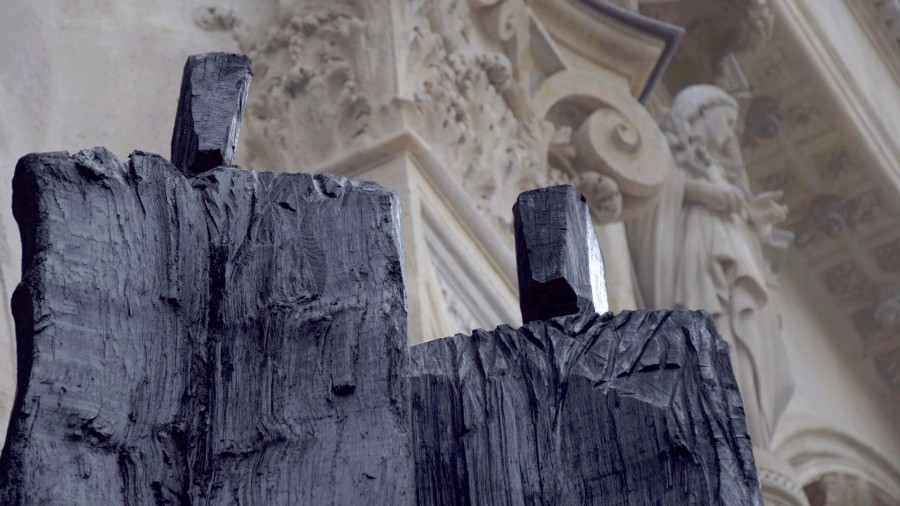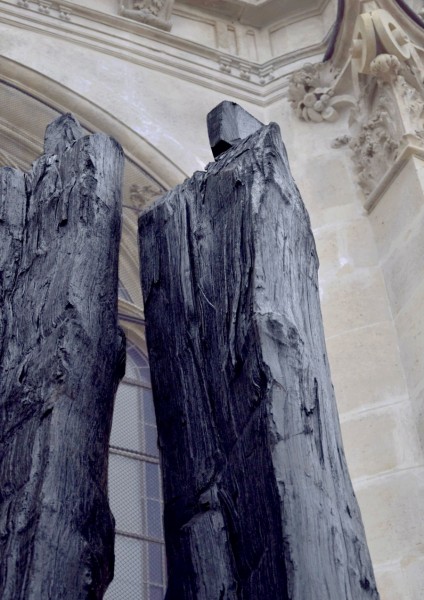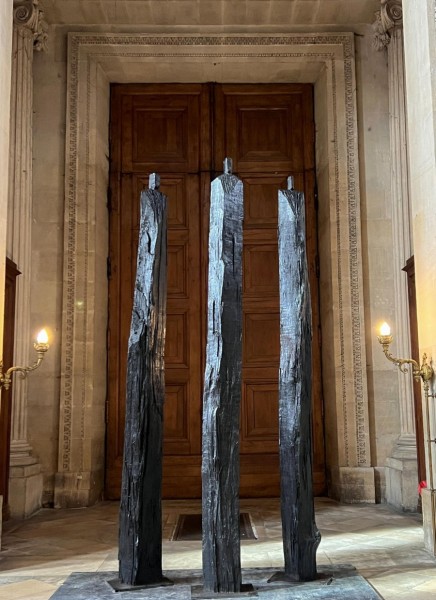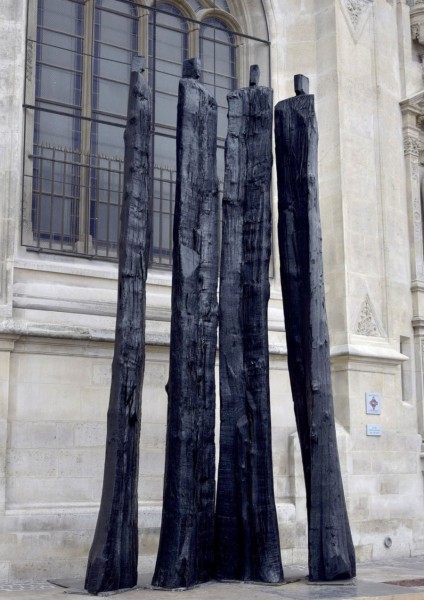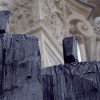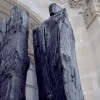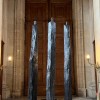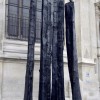Inside St. Eustache, three independent sculptures are made from hand-split oak trunks, they are assembled into a contemporary Golgotha, referring to the balance of the frescoes of the Legend of the True Cross (Bacci Chapel of the Basilica of St. Francis in Arezzo), a masterpiece by Piero de la Francesca.
In front of the forum, the motionless forms resembling men look at the crowd, which in turn looks at them. A kind of connivance is established between the tree, carved in the heart and the passer-by.
The artist, born in 1955 near Reims where he lives and works, uses similar forms in all his works. It is a dialogue with humanity, from one installation to another, from the space of a church, to its exterior and then from one continent to another.
"Watchers who look at us"
The works of Christian Lapie could not be exhibited as planned on the Parvis de Notre-Dame, currently under construction, so the Diocese of Paris proposed that Saint-Eustache take over. The visual college, presided over by its parish priest, in view of the quality of the work of the internationally recognized artist and the meaning that his work could take on in a consecrated place, wished to welcome his sculptures during the Lenten season.
For his part, Christian Lapie immediately thought of a scenography and pieces that would be meaningful and adapted to our Church. Their installation is divided into two parts. Outside in the public space where everyone can look at the works at their own pace. Inside the church where the look becomes different, can inscribe in the duration and meditation. These imposing pieces required a lot of logistical work to set them up, administrative procedures and complex prefectural authorizations that must not be overlooked and for which we must thank all those who contributed.
To elaborate his works, the artist splits oak trunks by hand, sculpts them with a chainsaw and passes them through linseed oil to make them rot-proof. Their monumental size disturbs our vision, forcing us to step back and raise our eyes to embrace their full volume. Are they human silhouettes or simply offered to our gaze? This hesitation, intended by the artist, invites us to think beyond the visible, to deepen our relationship with the invisible and to experience what is beyond us.
Every good work of art is open to the reading of each person and invites us to cross the threshold of its novelty. In this Lenten season, the tension between these silhouettes, at once hieratic and uprooted, between their strength in holding to the ground and their elevation to the sky, can only celebrate the figure of the dead and risen Christ. These hundred-year-old oak trunks, torn from the earth by storms and conflicts, stand again in space to remind us of "our human capacity to stand". Their transfigured silhouettes can only tell us with a quiet strength that we are also resurrected.
Françoise Paviot
